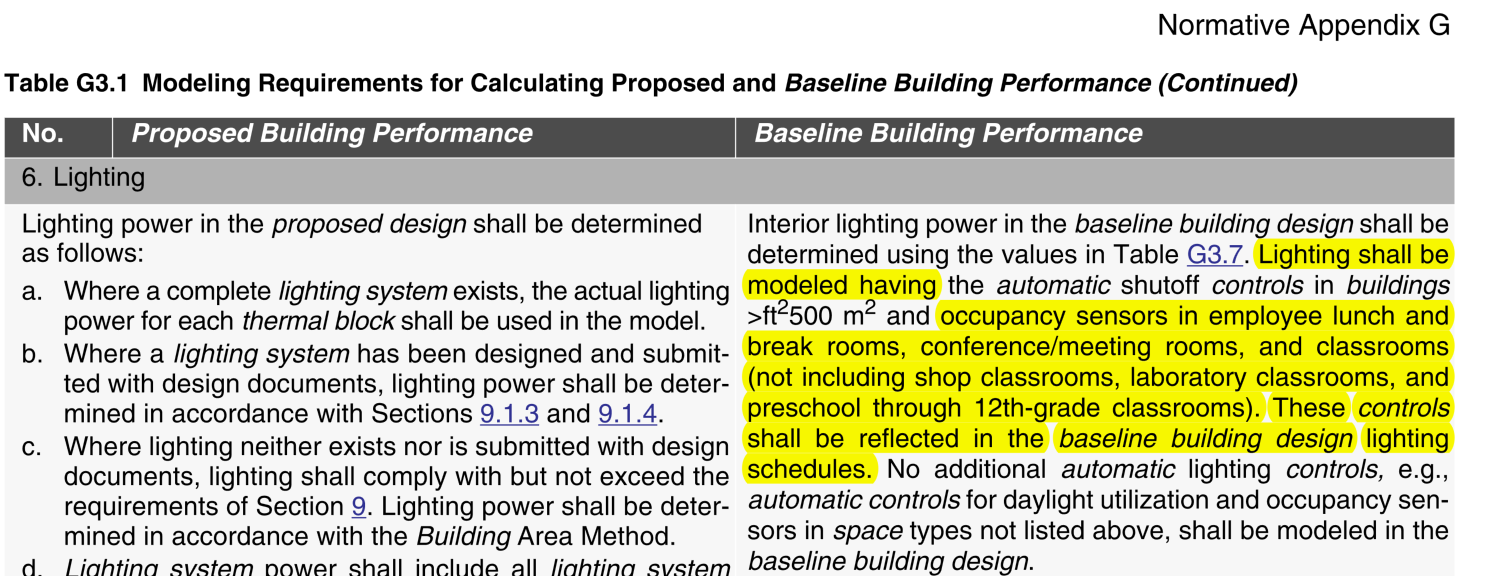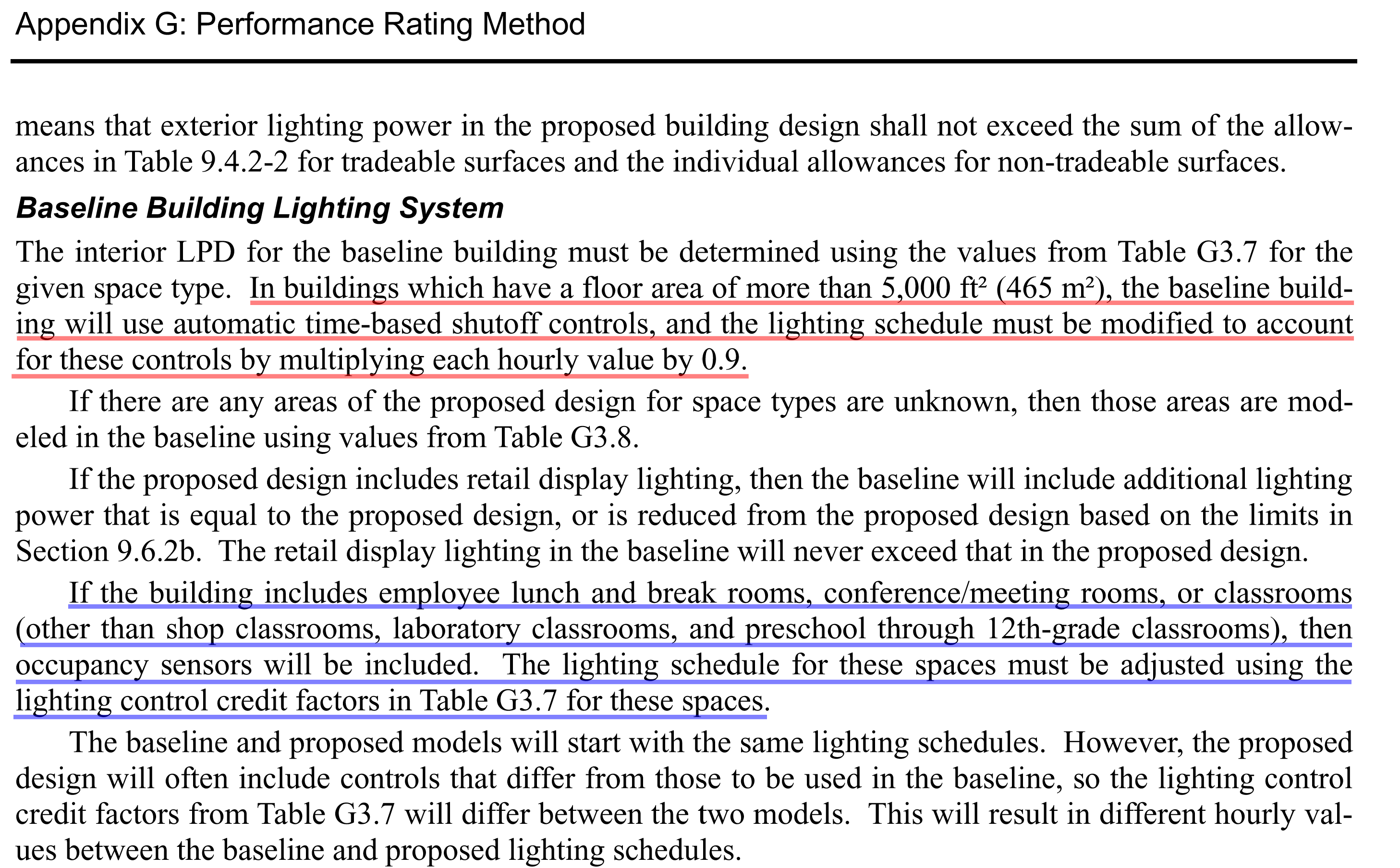Hi @Keigo. Not sure I'm entirely answering your questions, but here's my take. I haven't sifted through past 90.1 interpretation requests - may do that at some other point. And the 2019 User Manual (which I haven't consulted) may be useful here.
I do agree that the language is confusing for baseline building design (BBD) lighting schedules, when altered to reflect automatic shutoff controls / occupancy sensors. IMHO, the requirement is poorly worded, and should instead read something like (90.1 2022, SI edition):
In buildings > 500 m2, lighting shall
be modeled having automatic shutoff
controls (e.g. occupancy sensors) in:
- employee lunch and break rooms
- conference/meeting rooms
- (certain) classrooms (e.g. college/university)
First, interior lighting controls apply (well) to spaces - not buildings. So I think the scope of the requirement needs rewording. Second, there are many instances in 90.1 where occupancy sensors are explicitly referenced (even mandatory). Yet elsewhere in 90.1, the more general term automatic shutoff control device is retained. I'd consider an occupancy sensor as an obvious automatic shutoff control device. Other automatic shutoff control options would include key-card access, logging out of one's designated (enclosed) office workstation, etc.
9.4.1.1.h describes automatic shutoff controls (no explicit mention of occupancy sensors, BTW). These are mandatory for a dozen or so space types (see "auto full OFF" column in Table 9.5.2.1-1), including the 3 listed above ("lounge" should be associated to "break rooms", BTW). I believe the intention of this requirement is to ensure that some of these space types (not all), required to have mandatory automatic shutoff controls, be modelled accordingly. Why just these 3? Can't say for sure, but they do share common characteristics:
- larger (in m2) than the others
- when occupied, populations typically vary from half-a-dozen to 30 or 40 people - not single occupancy
- their use tends to be somewhat predictable (e.g. number of expected people, expected/planned events).
Occupancy in the other (smaller) targeted space types (like enclosed offices, supply/storage rooms) are much more challenging to predict. So my take is that the 90.1 TC is making here a reasonable judgement call on when/where to factor in mandatory automatic shutoff controls when working with Appendix G. Hence the "NONE" entries in G3.7. Why "None" in some cases and "0%" reduction elsewhere in G3.7 - beats me! And why suggest a 30% reduction for enclosed offices (G3.7), when these spaces are already required to integrate automatic shutoff lighting controls as per Table 9.5.2.1-1? Double-dipping? Can't answer ...
Regardless, the very same schedule alterations should equally apply IMO to the proposed building design (PBD) schedules, which I think is what is described (loosely) in (g):
For lighting controls, at a minimum,
the PD shall contain the mandatory
automatic lighting controls
specified in Section 9.4.1 (e.g.,
automatic daylight responsive controls, occupancy sensors,
programmable controls, etc.).
In (i), it ... (more)









